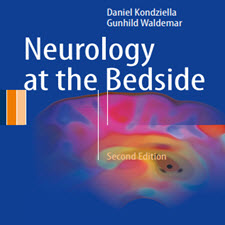The Plasticity of Skeletal Muscle
ABSTRACT
Recent advances in the generation of skeletal muscle derivatives from pluripotent stem cells (PSCs) provide innovative tools for muscle development, disease modeling, and cell replacement therapies. Here, we revise major relevant findings that have contributed to these advances in the field, by the revision of how early findings using mouse embryonic stem cells (ESCs) set the bases for the derivation of skeletal muscle cells from human pluripotent stem cells (hPSCs) and patient-derived human-induced pluripotent stem cells (hiPSCs) to the use of genome editing platforms allowing for disease modeling in the petri dish.
INTRODUCTION
Regenerative medicine comprises multiple research areas and therefore can be defined as “an interdisciplinary field of research and clinical applications focused on the repair, replacement or regeneration of cells, tissues or organs to restore impaired function resulting from any cause, including congenital defects, disease or trauma” . There are wide ranges of technologies that can contribute to achieve this goal. Some methodologies consist on cell therapy, tissue engineering, gene therapy, and biomedical engineering techniques, as well as more traditional treatments involving pharmaceuticals and devices. Overall, regenerative medicine is the key new discipline with true potential to change the field of current health care from traditional reactive to preventative and restorative health-care style. Degenerative diseases in humans are characterized by loss or malfunction of specific cell types. Often, replacement of the whole organ is the unique treatment in clinics (i.e., muscular dystrophies). Unfortunately, for most of the pathologies involving organs, transplant is the unique possibility of treatment. Nevertheless, donor supplies are still scarce for clinical demand. In this regard, cell therapy is one of the most important approaches for tissue regeneration and in some cases a promising and feasible alternative to whole organ transplantation. In this chapter we are going to revise the potential use of pluripotent stem cells (PSCs) for skeletal muscle disease modeling and differentiation. Our goal is to provide an extensive overview by revising from the early findings using mouse embryonic stem cells (ESCs) for the derivation of skeletal muscle cells to the latest findings making use of in vitro genome editing platforms for the study of skeletal muscle disorders in humans.
چکیده
پیشرفت های اخیر در تولید عروق اسکلتی مشتق شده از سلول های بنیادی پلورپوپتون (PSCs) ابزار نوآورانه برای توسعه عضلات، مدل سازی بیماری ها و درمان های جایگزین سلولی را فراهم می کند. در اینجا، ما یافته های مرتبط مهم را که به این پیشرفت ها در زمینه کمک کرده اند، بازبینی می کنیم که چگونه یافته های اولیه با استفاده از سلول های بنیادی جنینی موش (ESCs) پایه های مشتق سلول های عضلانی اسکلت را از سلول های بنیادی پلوروپتوپ انسانی (hPSCs) و سلول های بنیادی پلورپوفتون القا شده توسط انسان (hiPSCs) به استفاده از سیستم های ویرایش ژنوم اجازه می دهد تا برای مدل سازی بیماری در ظرف پتری.
مقدمه
طب سوزنی شامل مناطق متعدد تحقیقاتی است و بنابراین می تواند به عنوان “زمینه بین رشته ای تحقیق و برنامه های بالینی متمرکز بر تعمیر، جایگزینی و یا بازسازی سلول ها، بافت ها و یا اندام ها برای بازگرداندن عملکرد ناشی از هر گونه علت، از جمله نقص مادرزادی، بیماری یا تروما “. محدوده وسیعی از فن آوری هایی وجود دارد که می توانند در دستیابی به این هدف کمک کنند. برخی از روشها شامل درمان سلول، مهندسی بافت، ژن درمانی و تکنیک های مهندسی پزشکی و همچنین درمان های سنتی تر داروها و دستگاه ها می باشند. به طور کلی، پزشکی احیا کننده یک رشته اصلی جدید با پتانسیل واقعی برای تغییر زمینه مراقبت های بهداشتی در حال حاضر از شیوه های واکنشی سنتی به پیشگیری و مراقبت های بهداشتی است. بیماری های تخریشی در انسان با از دست دادن یا خرابی انواع سلول های خاص مشخص می شود. اغلب جایگزینی کل ارگان درمان منحصر به فرد در کلینیکها (یعنی دیستروفی عضلانی) است. متاسفانه، برای بسیاری از پاتولوژی هایی که عضو بدن هستند، پیوند تنها امکان درمان است. با این وجود، منابع دونر هنوز برای تقاضای بالینی کم است. در این راستا، درمان با سلول یکی از مهمترین روش های بازسازی بافت است و در بعضی موارد جایگزین امیدوار کننده و کامل برای پیوند کامل ارگان ها است. در این فصل ما قصد داریم تا استفاده بالقوه از سلول های بنیادی پلورپوفتون (PSCs) را برای مدل سازی و تمایز بیماری های ماهیچه اسکلتی تجدید نظر کنیم. هدف ما ارائه مرور کلی از طریق مرور از یافته های اولیه با استفاده از سلول های بنیادی جنینی موش (ESCs) برای استخراج سلول های عضلانی اسکلتی به آخرین یافته ها با استفاده از سیستم های ویرایش ویرایش ژن در in vitro برای مطالعه اختلالات عضلانی اسکلتی در انسان است .
Year: 2016
Publisher: SPRINGER
By : Kunihiro Sakuma
File Information: English Language/ 295 Page / size: 2.67 MB
سال : 1395
ناشر : SPRINGER
کاری از : Kunihiro Sakuma
اطلاعات فایل : زبان انگلیسی / 295 صفحه / حجم : MB 2.67

![Plasticity.of.Skeletal.Muscle_.From.Molecular.[taliem.ir]](https://taliem.ir/wp-content/uploads/Plasticity.of_.Skeletal.Muscle_.From_.Molecular.taliem.ir_.jpg)

![Muscle.and.Tendon.Injuries.Evaluation.[taliem.ir] Muscle.and.Tendon.Injuries.Evaluation.[taliem.ir]](https://taliem.ir/wp-content/uploads/Muscle.and_.Tendon.Injuries.Evaluation.taliem.ir_.jpg)

![Plastic.Brain.[taliem.ir]](https://taliem.ir/wp-content/uploads/Plastic.Brain_.taliem.ir_-150x150.jpg)
![Pocket.Book.for.Simulation.Debriefing.in.Healthcare.[taliem.ir]](https://taliem.ir/wp-content/uploads/Pocket.Book_.for_.Simulation.Debriefing.in_.Healthcare.taliem.ir_-150x150.jpg)
دیدگاه خود را ثبت کنید
تمایل دارید در گفتگو شرکت کنید؟نظری بدهید!